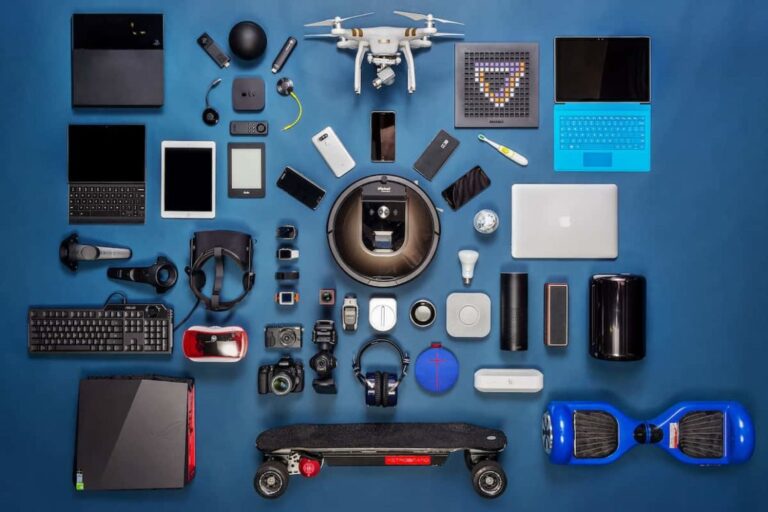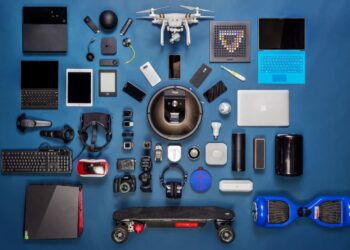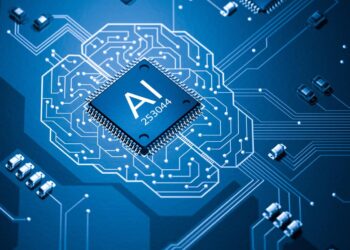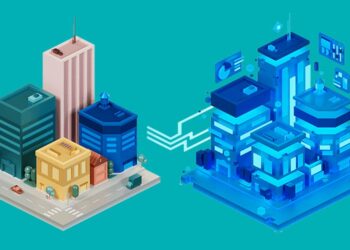The relentless pace of technological advancement continually unveils a tantalizing glimpse into tomorrow, promising a future where our daily lives are fundamentally reshaped by ingenious devices. Future gadgets are not merely incremental upgrades; they represent a bold leap towards a world of pervasive intelligence, seamless connectivity, and intuitive interaction, poised to redefine daily life. From personalized health companions and augmented reality interfaces to truly smart homes and autonomous personal assistants, these innovations are blurring the lines between the physical and digital, offering unprecedented convenience, efficiency, and immersive experiences. This comprehensive exploration delves into the cutting-edge concepts and emerging prototypes driving this revolution, its profound impact across diverse facets of human existence, the significant challenges standing in its way, and its essential role in sculpting a future of unparalleled integration and personalized technology. Understanding these imaginative breakthroughs is crucial for anyone navigating the intricate tapestry of 21st-century progress.
The Vision of Tomorrow

Our present-day gadgets, while impressive, often serve as stepping stones to a far more integrated and intelligent future. The next generation of devices aims to anticipate our needs, blend seamlessly into our environments, and empower us in ways previously imagined only in science fiction.
A. Evolution of Personal Computing
The journey from bulky mainframes to ubiquitous smartphones has set the stage for technology that becomes an extension of ourselves.
- Desktop Era: Computing was fixed to a location, largely for work or specialized tasks.
- Laptop Era: Mobility increased, allowing work and entertainment on the go.
- Smartphone Era: Pervasive connectivity and app ecosystems brought computing into our pockets, transforming communication, commerce, and daily habits.
- Wearables Era (Current): Devices like smartwatches and fitness trackers are moving technology onto our bodies, providing immediate data and discrete interactions.
- Ambient Computing (Future): The ultimate goal where technology becomes virtually invisible, embedded everywhere, and intelligently responsive to our presence and needs without explicit commands. This is where future gadgets truly shine.
This progression highlights a continuous drive towards more personal, intuitive, and seamlessly integrated technology.
B. Core Characteristics
These aren’t just incremental improvements; they represent a paradigm shift in how devices function and integrate.
- Pervasive Intelligence: Embedded with advanced AI, these gadgets will not only process data but also learn from our behaviors, anticipate our needs, and offer proactive assistance.
- Seamless Interactivity: Moving beyond touchscreens to natural interfaces like voice, gestures, thought control (Brain-Computer Interfaces), and context-aware interactions.
- Hyper-Personalization: Devices will adapt to individual preferences, health states, and emotional nuances, offering truly bespoke experiences.
- Invisible Integration: Blending into our clothing, environments, or even our bodies, becoming less noticeable as distinct devices and more like an extension of ourselves.
- Real-time Responsiveness: Leveraging 5G and edge computing for instantaneous processing and feedback, critical for autonomous and immersive applications.
- Sustainable Design: Increasingly incorporating eco-friendly materials, energy harvesting, and modular designs for longevity and reduced environmental impact.
These characteristics collectively paint a picture of a future where technology is always there, always ready, and always learning, yet often remains discreetly in the background.
Cutting-Edge Concepts
The “future gadgets” span a vast array of functionalities, driven by breakthroughs in AI, advanced materials, miniaturization, and connectivity.
A. Augmented Reality (AR) Glasses
AR glasses are poised to be the next major computing platform, transforming how we perceive and interact with information.
- Ubiquitous Digital Information: Overlaying navigation directions, real-time translations, social media notifications, or contextual information directly onto our field of vision.
- Context-Aware Assistance: Recognizing objects, people, and places in the real world and providing relevant data or assistance (e.g., identifying a plant, showing restaurant reviews).
- Immersive Communication: Enabling holographic video calls where participants appear to be in the same physical space.
- Hands-Free Productivity: Allowing professionals to access data, instructions, and remote expert guidance directly in their view while keeping their hands free for tasks.
- Sleek Form Factors: Future iterations aim for lightweight, fashionable designs, making them indistinguishable from regular eyewear, overcoming current bulky prototypes.
B. Advanced Wearables and Biometric Monitors
Beyond current smartwatches, the next generation of wearables will offer unprecedented insights into our health and well-being, becoming true personal health companions.
- Continuous Non-Invasive Monitoring: Tracking blood glucose, blood pressure, hydration levels, and even stress hormones discreetly via skin contact or smart fabrics.
- Predictive Health Alerts: AI analyzing continuous biometric data to detect subtle changes indicative of impending illness or health risks, providing early warnings.
- Personalized Wellness Coaching: AI-driven feedback and recommendations for nutrition, exercise, sleep, and mental well-being, tailored to real-time physiological data.
- Smart Textiles: Clothing embedded with an array of sensors to monitor vital signs, track athletic performance, or provide therapeutic feedback, becoming an invisible part of our attire.
- Neural Interfaces (Early Stages): Devices that can read brain signals for basic control of other gadgets or to monitor cognitive states, paving the way for Brain-Computer Interfaces (BCIs).
C. Smart Home Ecosystems
Future homes will be truly intelligent, anticipating needs and seamlessly adapting to occupants.
- Proactive Environmental Control: Systems that learn family routines, predict weather changes, and adjust lighting, temperature, and air quality autonomously for optimal comfort and energy efficiency.
- Personalized Ambiance: Adjusting music, scent, and visual displays based on mood or activity.
- Automated Maintenance: Smart appliances that self-diagnose issues, order parts, or schedule repairs.
- Integrated Security: AI-powered cameras that differentiate between family, guests, and intruders, and autonomous security drones for perimeter monitoring.
- Robotic Assistants: More advanced domestic robots for cleaning, cooking assistance, and even companionship, moving beyond simple vacuum cleaners.
D. Hyper-Personalized Displays and Interfaces
Displays will be dynamic, adaptive, and integrated into nearly every surface.
- Flexible and Rollable Screens: Displays that can be rolled up, folded, or stretched, allowing for adaptable screen sizes on demand.
- Transparent Displays: Screens embedded in windows or furniture that can switch between transparent and opaque, displaying information when needed.
- Holographic Projections: Devices capable of projecting interactive 3D images into the air, enabling truly volumetric displays.
- Adaptive User Interfaces (AUIs): Interfaces that change based on context, user intent, and even emotional state, presenting information in the most intuitive way possible.
- Intelligent Surfaces: Tabletops, walls, or even clothes that become interactive displays or control surfaces.
E. Advanced Robotics
Robots will become more versatile, intelligent, and integrated into service and personal roles.
- Humanoid Robots: More sophisticated and agile humanoid robots capable of complex tasks in homes, healthcare, and dangerous environments.
- Personal Delivery Drones/Bots: Automated last-mile delivery of goods directly to homes or offices.
- Companionship Robots: AI-powered robots offering emotional support, interaction, and assistance, particularly for the elderly or isolated.
- Bio-Inspired Robots: Robots designed with biomimicry, exhibiting agility and adaptability inspired by nature (e.g., soft robots, insect-inspired drones).
Transformative Impact
The convergence of these cutting-edge gadgets will have a profound and far-reaching impact on nearly every aspect of our existence.
A. Personalized Health and Wellness
The ability to continuously monitor and analyze personal health data will transform healthcare from reactive to proactive.
- Predictive Diagnostics: Early detection of diseases before symptoms appear, enabling timely intervention and better outcomes.
- Optimized Lifestyle: Personalized recommendations for diet, exercise, and sleep based on real-time physiological responses.
- Democratized Healthcare: Access to advanced health monitoring and remote medical consultations via smart devices, especially in underserved areas.
- Enhanced Mental Well-being: Wearables that detect stress or anxiety and offer immediate, personalized interventions like guided meditation or cognitive exercises.
B. Work and Productivity
Future gadgets will fundamentally change how we work, augmenting human capabilities and streamlining workflows.
- Contextual Information Overlays: AR glasses providing instant access to data, schematics, or expert guidance for field workers, surgeons, or technicians.
- AI-Powered Assistants: Proactive AI that manages schedules, prioritizes tasks, drafts communications, and synthesizes information, freeing humans for creative and strategic work.
- Immersive Collaboration: Holographic meetings and shared virtual workspaces that reduce the need for physical travel and enhance remote team synergy.
- Automated Workflows: Intelligent gadgets automating routine administrative tasks, allowing professionals to focus on higher-value activities.
C. Learning and Education
Future gadgets will revolutionize education, making learning more immersive, personalized, and accessible.
- Immersive Simulations: VR headsets transporting students to historical events, inside the human body, or to distant galaxies for hands-on, experiential learning.
- AR-Enhanced Textbooks: Digital content overlaid onto physical books, bringing static pages to life with 3D models, videos, and interactive elements.
- Personalized AI Tutors: Gadgets with AI that adapts to individual learning styles and paces, providing tailored content and feedback.
- Remote Learning Enhancement: More engaging and interactive remote learning environments that foster a sense of presence and collaboration.
D. Entertainment and Social Interaction
Future gadgets will unlock unprecedented levels of immersion and redefine social engagement.
- Hyper-Realistic Gaming: Multi-sensory VR experiences that blend visuals, sound, haptics, and even scent for unparalleled immersion.
- Interactive Storytelling: Narratives that adapt to user choices, allowing for highly personalized and engaging entertainment.
- Metaverse Exploration: Seamless navigation through interconnected virtual worlds where users interact as avatars, fostering new forms of social connection and digital economies.
- AR-Enhanced Social Experiences: Digital overlays that augment social gatherings, sports events, or concerts with interactive elements and shared digital content.
E. Accessibility and Inclusion
Future gadgets hold immense potential to break down barriers for individuals with disabilities.
- Real-time Transcription and Translation: Smart glasses or hearables providing instant subtitles for conversations or translating foreign languages.
- Navigation Assistance: AR overlays guiding visually impaired individuals or providing orientation in complex environments.
- Sensory Augmentation: Devices that enhance hearing, sight, or provide alternative sensory inputs for those with impairments.
- Robotic Companionship: AI-powered robots assisting individuals with daily tasks, offering communication, and providing emotional support.
The Road to Ubiquitous Gadgets
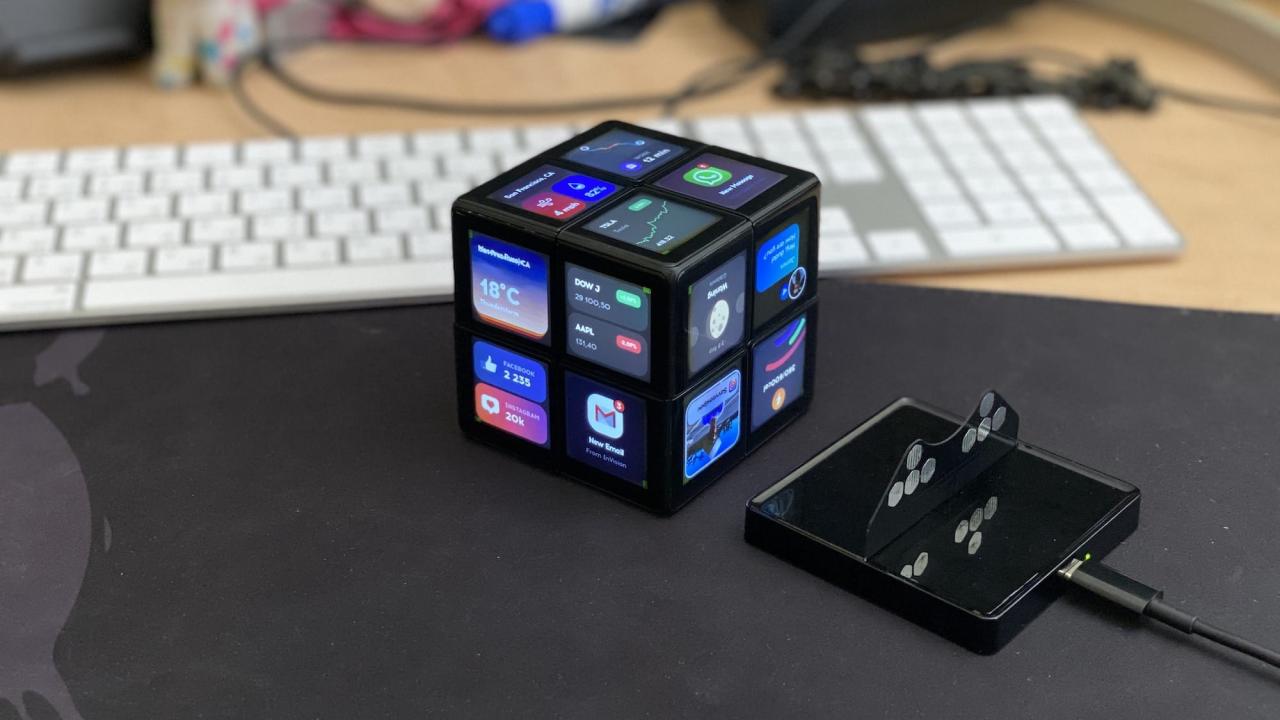
Despite the exciting vision, the path to widespread adoption of these future gadgets is fraught with significant technical, ethical, and societal challenges.
A. Technical Hurdles
The ambition of future gadgets pushes the boundaries of current engineering.
- Battery Life: Powering advanced sensors, AI, and displays in miniature form factors for extended periods remains a critical limitation. Energy harvesting and new battery chemistries are vital.
- Processing Power in Small Footprints: Integrating powerful processors and GPUs into sleek, comfortable designs without excessive heat generation.
- Network Latency: Achieving ultra-low latency for real-time, responsive interactions, especially for AR and autonomous systems, necessitates the full rollout of 5G and edge computing.
- Sensor Accuracy and Reliability: Ensuring consistent and clinical-grade accuracy from miniaturized, consumer-grade sensors for critical applications like health monitoring.
- Display Technology: Developing transparent, high-resolution, wide field-of-view displays for AR glasses that work effectively in various lighting conditions.
B. Data Privacy and Security
The continuous collection of highly intimate data by future gadgets raises profound concerns.
- Massive Data Collection: Wearables collect biometric and behavioral data; smart homes collect routines and preferences; AR glasses collect visual data of our surroundings.
- Data Security: Protecting this vast ocean of sensitive personal data from breaches, hacking, and unauthorized access.
- Consent and Transparency: Ensuring users truly understand what data is being collected, how it’s being used, and who it’s shared with.
- Surveillance Risk: The potential for ubiquitous gadgets to be repurposed for mass surveillance by governments or corporations, eroding individual privacy and civil liberties.
- Identity Theft: The risk of sophisticated digital identity theft if biometric data captured by gadgets is compromised.
C. Ethical and Societal Implications
The integration of advanced gadgets raises complex ethical questions about our humanity and society.
- Digital Addiction and Reality Detachment: Concerns about excessive reliance on immersive gadgets leading to detachment from physical reality and potential addiction.
- Algorithmic Bias: If AI powering these gadgets is trained on biased data, it can lead to discriminatory recommendations or experiences.
- Digital Divide: Exacerbating social inequalities if access to advanced, life-enhancing gadgets is limited to the privileged.
- Cognitive Load: The potential for information overload or constant notifications to negatively impact attention spans and mental well-being.
- Social Isolation: While facilitating virtual connections, over-reliance on gadgets might reduce face-to-face human interaction.
- Authenticity and Misinformation: The challenge of discerning reality from digitally manipulated content (e.g., deepfakes through AR) when digital overlays are seamless.
- Human Augmentation Ethics: Debates around “enhancement” technologies (e.g., neural implants) and their societal implications.
D. Cost and Accessibility
High initial costs can limit adoption.
- Premium Pricing: Cutting-edge technology often comes with a high price tag, making it inaccessible for many.
- Infrastructure Investment: The need for significant investment in underlying infrastructure (e.g., 5G, edge computing) to support pervasive gadgets.
- Market Fragmentation: Lack of universal standards can lead to competing ecosystems, increasing consumer confusion and cost.
E. Regulatory Frameworks and Governance
The rapid pace of gadget innovation often outpaces existing laws and regulations.
- Data Governance: New laws specifically addressing the unique types and volumes of data collected by future gadgets.
- Liability: Determining responsibility when an AI-powered gadget makes an error or causes harm.
- Safety Standards: Developing robust safety standards for devices that interact closely with or within the human body.
- International Harmonization: The need for global consistency in regulations to facilitate cross-border innovation and trade.
Conclusion
The Future Gadgets Unveiled are not merely technological novelties; they are the tangible manifestations of a future where intelligence and connectivity are deeply interwoven into the fabric of our daily lives. By anticipating our needs, responding intuitively to our presence, and enhancing our perceptions, these innovations promise unprecedented levels of convenience, efficiency, and profound personal insight. While significant hurdles remain—ranging from mastering complex technical challenges and safeguarding intimate data to navigating profound ethical dilemmas and ensuring equitable access—the relentless drive for human augmentation and seamless integration ensures their pervasive future. As we collectively embark on this journey, the imperative is clear: we must harness the transformative power of these gadgets responsibly, prioritizing human well-being, fostering continuous learning, and crafting a future where technology truly empowers us to live smarter, more connected, and ultimately, more fulfilling lives. The future is being designed, engineered, and unveiled, one groundbreaking gadget at a time.

